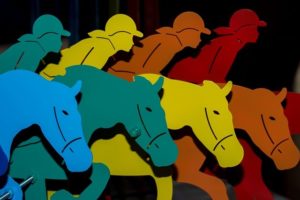How many times has Ryan Moore completed the 1,000 Guineas – Oaks double?
 Although he British Champion Jockey in 2006, 2008 and 2009, Ryan Moore has, since 2015, been first choice jockey to Aidan O’Brien at Ballydoyle Stables, Co. Tipperary. Indeed, it was in that capacity that he completed the 1,000 Guineas – Oaks double for the first time in 2016 and did so again in 2020. Moore had won the 1,000 Guineas twice before, on Homecoming Queen, trained by O’Brien, in 2012 and Legatissimo, trained by David Wachman, in 2015, and the Oaks once before, on Snow Fairy, trained by Ed Dunlop
Although he British Champion Jockey in 2006, 2008 and 2009, Ryan Moore has, since 2015, been first choice jockey to Aidan O’Brien at Ballydoyle Stables, Co. Tipperary. Indeed, it was in that capacity that he completed the 1,000 Guineas – Oaks double for the first time in 2016 and did so again in 2020. Moore had won the 1,000 Guineas twice before, on Homecoming Queen, trained by O’Brien, in 2012 and Legatissimo, trained by David Wachman, in 2015, and the Oaks once before, on Snow Fairy, trained by Ed Dunlop
In 2016, Minding – later described by O’Brien as ‘one of the best fillies I have ever trained’ – justified favouritism in the 1,000 Guineas, leading home an O’Brien 1-2-3 in the process. The Galileo filly suffered a facial injury leaving the stalls when narrowly beaten, at long odds-on, in the Irish equivalent, but justified favouritism, again, in the Oaks. In fact, had she been trained by anyone but O’Brien, she may well have contested the Derby, rather than the Oaks.
Four years later, Ryan Moore won both fillies’ Classics in the same season for a second time, aboard another Galileo filly, Love. She won the 1,000 Guineas by 4¼ lengths and the Oaks impressively, by 9 lengths. Like Minding in 2016, Love was named Cartier Three-Year-Old Filly in 2020.